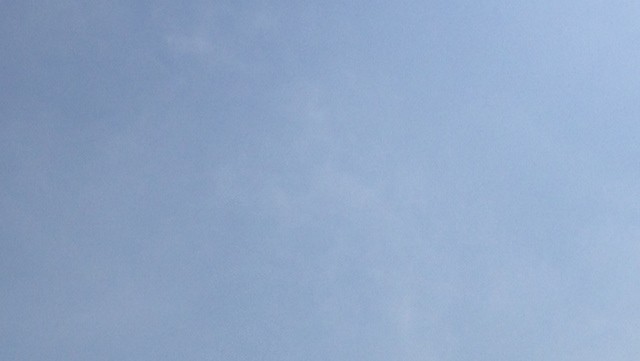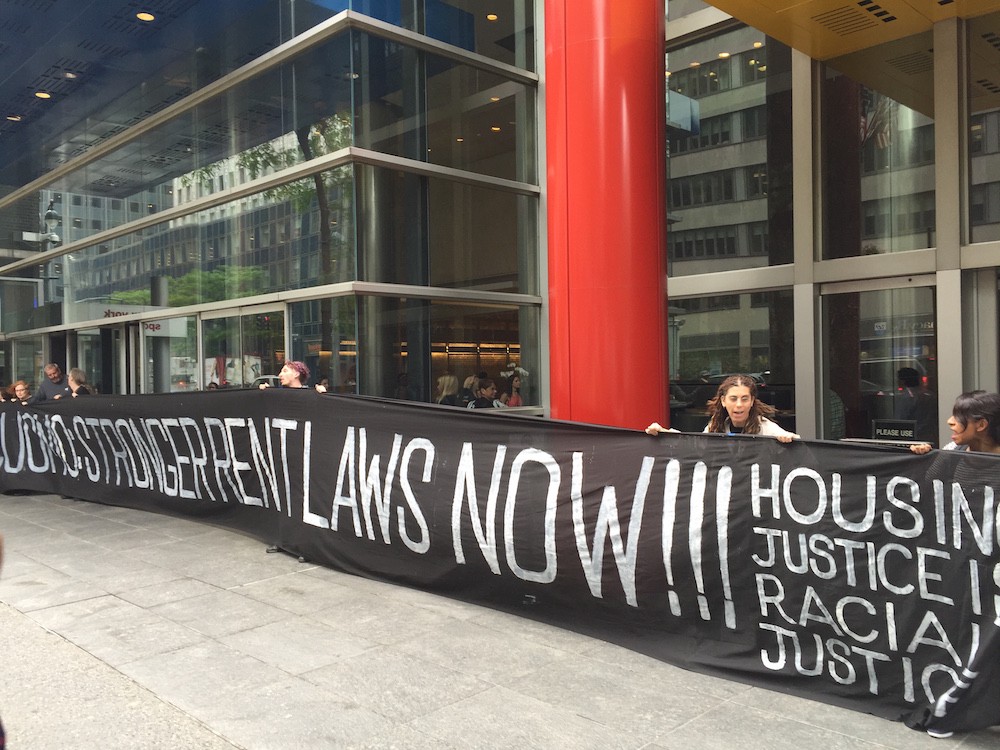Hudson Mohawke, "Scud Books"
You know how some mornings you wake up knowing that no matter what tiny victories you manage to extract — or, more likely, which titanic defeats you are briefly able to forestall — it is still going to be a day that brings you further confirmation of how empty, pointless and sad your life — all life — really is? Well, you are right to feel that way. Everything is terrible and only getting worse, and there is only so much pretending you can do to help hide how hollow the motions through which you go really are. Your brief joys are confidence tricks sprung on you by genes that have a selfish interest in keeping you going. Your deepest desires have been drummed into you by a society that wants to sell you something. The only honest thing you own is your despair, and that’s the most positive thing you can say about yourself at this point in your life. Also, there is no future point in your life where your feelings are any more upbeat. The most you have to look forward to is a sense of nostalgia about things you didn’t really enjoy that much the first time around. This song is pretty good though. Maybe it will distract you for a few minutes of your morning? Maybe not. I wish I had anything better to offer but everything is drenched in darkness with a gauzy film of grime around it and even the stuff that seems to promise hope will eventually prove disappointing. Enjoy.
New York City, June 11, 2015

★★ The haze was thick enough that it showed in the foreground. Pale-skinned people were flushing pink, in suit or shorts alike. In the hot sidewalk mass of waiting streetwear shoppers, some loyalists maintained their commitment to hoodies, a thermal shirt, a flannel, even as one young woman at the rear of the line whooped with relief at a gust of breeze. People gathered on the fake-turfed hotel rooftop around a table, under a fuzzy boom microphone. Air conditioner drips splatted off the facade of the Helmut Lang store, and rust streaked the dark metal. On the jaywalk between cars, the tailpipe heat was choking.
The Gawkerocalypse, Strictly by the Numbers

100,000,000: Damages Hulk Hogan is seeking in lawsuit against Gawker for publishing his sex tape, in dollars
45,000,000: Gawker’s advertising revenue last year, in dollars
20,000,000: Amount spent to build Kinja commenting platform, according to former Gawker Editorial Director and record-holder for greatest number of distinct tenures at Gawker, Joel Johnson, in dollars
16,000,000: Traffic to Gawker’s biggest post of last year, in pageviews
7,000,000: Gawker profits, in dollars
280,000: Monthly rent at Gawker’s new office, which it still has not moved into, in dollars
4,000: Length of Nick Denton’s anti-Facebook memo, in words
260: Gawker full-time employee headcount, in bodies
100: Length of video of Hulk Hogan sex-tape highlights posted by Gawker, in seconds
“Not 100”: Chance of a revolution, according to Nick, in percent
68: Amount of Gawker Media owned by Nick and his family, in percent
50: Amount won by Gawker Editorial Director Tommy Craggs in a bet regarding the lede of the New York Times article about the state of Gawker Media, in dollars
48: Age of Nick, in years
30: Length of Hulk Hogan sex tape received by Gawker on DVD, in minutes
12: Length of time ago Gawker was started, in years, according to the New York Times; amount paid per post to most non-site-lead Gawker Media bloggers until late 2007 when the pay system switched to pay-per-click, in dollars
10: Length of lease at Gawker’s new office, in years
4: Number of times Nick’s use of marijuana is referenced in some form in the New York Times article
1/10: Chances of disaster this year, requiring Nick “to sell a controlling interest in Gawker to keep it afloat” due to Hulk Hogan sex tape trial, according to Nick
1/50: Chances of disaster most years, according to Nick
Hare Relatable
Be the hare! Or, wait, be the snowboarder? The drone? Be……. the avalanche?
This has been Friday Inspirations.
Forms of Iced Coffee, Ranked

18. National-coffee-chain iced coffee (Starbucks/Peets/Coffee Bean and Tea Leaf)
17. Store-bought cold brew
16. Coffee-shop cold brew (all forms)
15. Slow-drip cold brew
14. Fancy bodega iced coffee with coffee ice cubes
13. Yesterday’s hot coffee, placed in the fridge for sixteen hours
12. Home-made cold brew in a jar that previously contained something other than coffee
11. Nitro cold brew
10. Fast-food-chain iced coffee (with milk and sugar)
9. Dunkin’ Donuts iced coffee (with milk and sugar)
8. Frappuccino (bottled)
7. Iced Americano
6. Iced pourover
5. Fancy milk carton iced coffee
4. Shakerato
3. Regular bodega iced coffee (with milk and sugar)
2. Vietnamese iced coffee
1. Japanese canned coffee
Photo by Denise Krebs
East India Youth, Live on KEXP
We are nearly halfway done with 2015 (normally I would say, “Good, get it over with, anything that pushes me closer to the end is to be celebrated and encouraged,” but unfortunately next year is 2016 and I am already full of dread over what a nightmare that’s going to be, so I suppose I will cling tight to 2015 for as long as I can) and the best release from this calendar year remains East India Youth’s Culture of Volume. The kid who is the band recently did a live set at Seatle radio station KEXP and if you haven’t yet given the record a listen this should be a pretty good indication of whether or not it’s for you. Got half an hour? Enjoy.
New York City, June 10, 2015

★★★★ Well-formed and shapely white clouds proceeded across the blue, with generous space between them. The light was like silver leaf. The air was warm but not hot; the clouds intercepted the sun often enough to keep it from baking. Hair and shirttails tossed in the breeze. The clouds became fewer, giving the late sun the little boost it needed. Edges of air conditioners made bright boxes against the face of a building whose intentional architecture lay in shadow. The light, now gone golden, disclosed nagging irregularities between the yellow paint jobs of taxis at Houston Street.
Who Controls Rent Control?
by Brendan O’Connor

On Thursday morning, seven people were arrested outside Governor Andrew Cuomo’s office in Midtown Manhattan. They were there for a demonstration primarily intended to motivate the governor to strengthen the state’s rent regulation laws, which are set to expire on Monday. There are approximately one million rent-controlled and rent-stabilized apartments in New York City, which house over two million people. If rent regulation laws are allowed to lapse, the city’s already-shrinking stock of those apartments would disappear completely: Landlords would be able to charge market-rate rents once their current leases are up.
In New York City, there are two kinds of rent regulation: rent control and rent stabilization. According to the 2014 Housing and Vacancy Survey, of the city’s 2.2 million rental units, forty-seven percent are rent stabilized and 1.2 percent are rent controlled. “Rent control” is the older of the two programs, and generally applies to apartments in one- or two-family buildings built before 1947. (Rent-controlled apartments can only be bequeathed to family members who were living in the unit for two years before the original tenant vacates it.) “Rent stabilization” generally applies to apartments in buildings, built between 1947 and 1974, comprising six or more units. Both limit the amount by which landlords can increase tenants’ rent when renewing leases; however, rents in rent-regulated apartments can still be increased incrementally over time and eventually, once they hit twenty-five hundred dollars per month — and a tenant vacates the apartment — they become “deregulated,” and can be listed at market prices. (This threshold was raised from two thousand dollars per month in 2011, the last time rent regulation laws were re-negotiated.) This is called vacancy decontrol.
There are other, related loopholes in the laws that landlords can use to deregulate their rent-regulated apartments more quickly. When a landlord makes major capital improvements to a building, or improvements to individual apartments, they can permanently increase rents to cover the cost. (This accelerates the pace at which an apartment is likely to hit the twenty-five-hundred-dollar threshold.) Also, when an apartment vacates, landlords receive a vacancy bonus: They can increase the rent for the next tenant by as much as much as twenty percent.
These loopholes give landlords powerful incentives to harass rent-regulated tenants — who are often elderly — out of their apartments. On Thursday, outside Governor Cuomo’s office, one woman, who went by the name Carmen and has lived since 1997 in a rent-stabilized apartment in Ridgewood, situated along the rapidly gentrifying L-train corridor, told me that her landlord began harassing her after a period of disability. At one point, she left her walker out in her hallway overnight, and he threw it out, she said. He has also cut off the power to her apartment, and threatened to sue her over her service dog. Carmen’s landlord has already raised her rent by three hundred dollars, she said, and he wants her out so he can raise it another thousand.

Until very recently, Governor Cuomo was not understood to be a friend to tenants or their interests. As U.S. Attorney Preet Bharara lay waste to the Albany legislature earlier this year, indicting Assembly Speaker Sheldon Silver in January on corruption charges relating to his connections with New York City real estate industry and Senate Leader Dean Skelos in May on corruption charges relating to his connections with the New York City real estate industry, Cuomo suggested that radical renegotiation of the rent-regulation laws would not be appropriate. “Albany is somewhat — has a lot going on right now,” he told the New York Observer in April. Activist groups, frustrated with the governor for not having pushed hard enough for an overhaul in 2011, sensed an opportunity. “Low- and moderate-income tenants who live in more than 1 million rent-regulated apartments are at a breaking point because of the failure of leadership in Albany,” the Alliance for Tenant Power wrote in a letter to the governor later that month. “On your watch, the housing affordability crisis has grown dramatically: entire neighborhoods have been turned into gilded enclaves that cater primarily to infamously wealthy real-estate donors.”
Last weekend, Cuomo wrote an op-ed for the New York Daily News committing to closing all of the aforementioned loopholes. “While the Legislature has it in their hands to negotiate the specifics of the debate, there is one point that is non-negotiable: Their work will not be done unless and until they pass a law to strengthen and extend tenant protections,” he wrote. “I will call them back into session every day if necessary until tenants are protected with new regulations.” The legislative session ends next Wednesday.
Also set to lapse on Monday is the controversial 421-a tax exemption, which is granted to developers who build on underutilized land. (The meaning of this piece of bureaucratic vocabulary does not seem especially fixed.) A developer who is building on unused or underutilized land does not have to pay property taxes for a set period of time — usually between ten and twenty years. If the developer is building a condominium building, the property taxes for the people who buy those condos will be lower; if the developer is building a rental building, the rents will be lower, because the overall expense of building the building was lower (temporarily). “It does produce some affordable housing,” Tom Waters, a housing policy analyst with the New York Community Service Society, told me. “But it’s an expensive way to do it.” According to a study published by NYCSS last month, 421-a costs the city over a billion dollars a year.
Because the price of land in New York City is so high, developers I have spoken to all say that without 421-a or an equivalent program, there is no incentive to build affordable — or even, in some areas, market-rate — housing. “If I didn’t have 421-a, I would concentrate on commercial building,” George Xu, a developer with projects in Long Island City, Flushing, and Bushwick, told me. “We would be very reluctant starting residential projects.” He added, “If there’s less supply, demand goes up, and then rents go up. And that’s no good.” After all, developers are capitalists: They are businesspeople; they’re building buildings because it makes them money, not because housing is a right. (Even if housing is a right.)
However, tenant advocacy groups — like those that gathered outside Cuomo’s office on Thursday morning — suggest that not only is 421-a too generous to developers, but also it functions as a kind of Trojan horse for gentrification and displacement, facilitating the development of buildings that will, in a matter of ten, fifteen, or twenty years ultimately price out a neighborhood’s residents when the tax exemption expires. This, along with weak protections for rent-regulated tenants, has probably done more than anything else to engender the housing crisis that New York City finds itself in today.
Activist groups approved — cautiously, skeptically — of the governor’s position in the Daily News. “What the Governor proposes… are exactly what tenants need,” tenant advocacy coalition Real Rent Reform said in a statement. “Further, given the fact that the current rent laws were negotiated by two individuals who have subsequently been arrested for corruption schemes involving the real estate industry, it is clear that these laws are the product of corruption and cannot be allowed to stand.” (The reference here is to Sheldon Silver and Dean Skelos, who, along with Cuomo, constitute Albany’s three men in a room, a trio which the governor once referred to as “the three amigos.” Of the three, Cuomo is the last man standing — that Bharara may indict him, too, now seems likely.) Tom Waters, the author of the Community Service Society’s report on 421-a, and also of a more recent report that found that rents have risen thirty-two percent citywide since 2002, told me, “There are two things to our advantage: We have a mayor who is strongly aligned with tenants’ rights, and the legislature is embarrassed over the indictments.”
It remains to be seen whether the governor will — or even can — deliver. “Key staff have left, his poll numbers are dropping, and more people are willing to publicly stand up to him,” Ava Farkas, executive director of the Metropolitan Council on Housing, told City Limits. “So in that context, his recent embrace of stronger rent laws is a bold but risky position to take if he’s anything less than serious about making it happen. If he delivers, he’s a hero to millions of tenants and he will have re-established his dominance over Albany. If he fails — especially after so publicly putting his brand on it — it tells that State and the political world that his time as the ultimate power broker is over.” Earlier this week, Capital New York reported that Cuomo was working on a deal that would link strengthening rent regulations with an education tax credit that would incentivize donations to private schools over donations to public schools. Very few people are happy about this, and certainly not anyone outside Cuomo’s office on Thursday. “We have to choose between a place to live and a place to send our kids to school,” one demonstrator said. “Great.”
There, is however, a way forward — and one that would absolve Cuomo of responsibility for enacting policies that might displease landlords. (Among both developers and activists, that 421-a will be renewed in some form seems to be a foregone conclusion — the real estate industry is just too powerful an entity to allow something so beneficial to completely disappear.) If the governor were to call a state of emergency — and what is the housing crisis if not that? — the City Council and mayor could strengthen rent laws themselves, without waiting for Albany to do so. At City Hall on Thursday, Councilman Jumaane Williams asked the governor to do just that. In this way, Williams is calling Cuomo’s bluff: There is, in fact, a straight-forward means to accomplish the end he said he wanted to accomplish in the Daily News piece last weekend; now, we will find out whether that is what the governor really wants after all.
Outside Cuomo’s office, tenants and activists banged pots and pans and stretched a long, black banner across the doors to the building, obstructing people on their way to work. “Governor Cuomo you can’t hide / we know you’re on the landlord’s side,” they chanted. And, “Get up, get down / there’s a housing crisis in this town.” Speaking into a bullhorn, Carmen from Ridgewood implored sleepy commuters to care. “You are just as much at risk,” she said. “If you’re not awake yet, you better wake up.”
Are Robots The Ladies Of The Future?
“Want to understand what it means to be a woman? Look to robots.” See also: “Lady Robots: The Shape of Things to Come On”
A Poem by David Lehman
by Mark Bibbins, Editor
Two Cigarettes in the Dark
for Stacey (July 26, 2014)
You talk I listen
Then I talk you listen
We decide that realism
Requires nudity so
We test out that theory
I vote in favor
Of your crimson nails
And the way you wore
Your scarf tonight
And used a little makeup
Not too much did you know
I like looking at photos
Of you from different years
All the different hair styles
Like how short and French
It was when we went
To Washington with my mother
And now it is 2:24 AM
And even I, who am on
Pacific Coast Time when I’m
In the East, figure it’s only
A few minutes more before
The booze the pills and the sound
Of Johnny Hartman singing a Mercer
Lyric (“I Thought About You”) and
Mercer doing the same (“One for
My Baby”) work their magic on me
Even if “it’s not in a gentleman’s code”
And you are my lady and Ella
Is singing “The Lady is a Tramp”
To a live audience of Californians
Kisses to you who have already
Reached a place behind the sun
All I can say is
It’s a luxury to be
Loved by you it makes me want
To write songs about it
And I think I will
When the clouds are behind me
And it’s a quarter to three
David Lehman’s most recent books are New and Selected Poems and The State of the Art: A Chronicle of American Poetry, 1988–2014. Sinatra’s Century: One Hundred Notes on the Man and His World is forthcoming from HarperCollins this fall.
You will find more poems here. You may contact the editor at poems@theawl.com.
